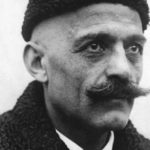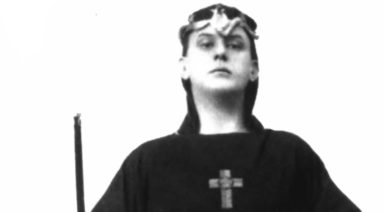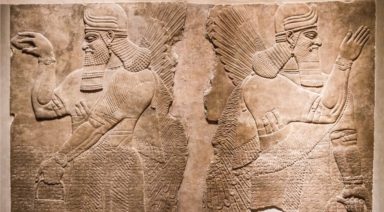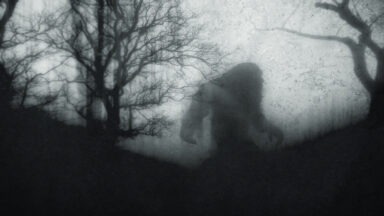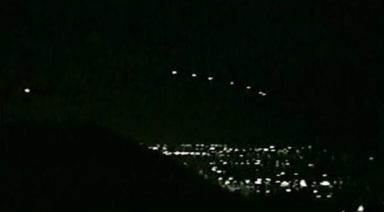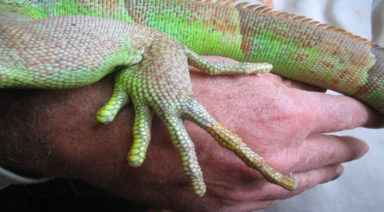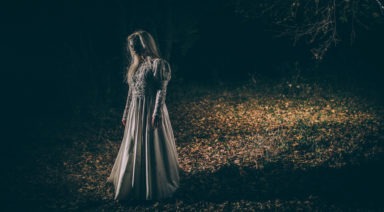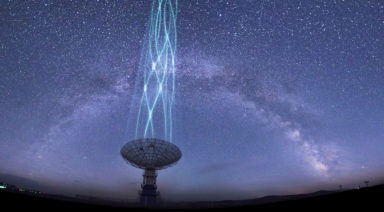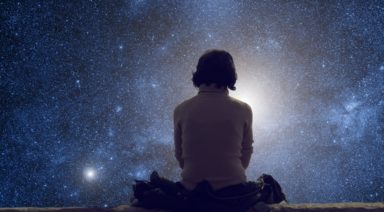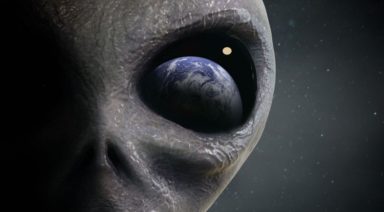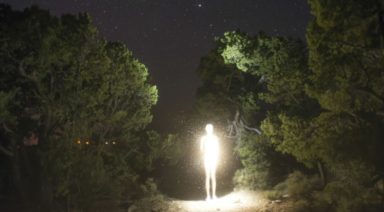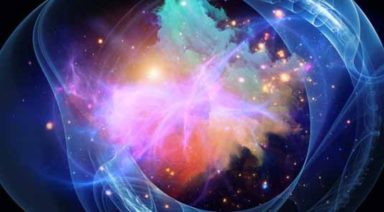Aleister Crowley’s Famous Thelemites and a Misunderstood Magick
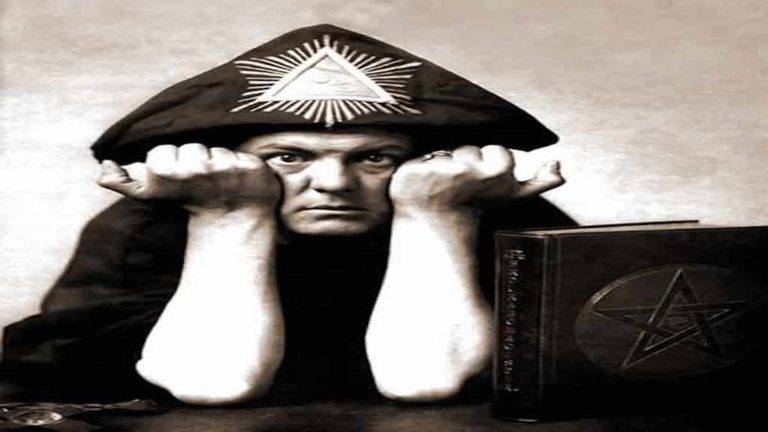
“Do what thou wilt, shall be the whole of the Law.” Those were the words Aleister Crowley opened every letter with, whether writing to one of his famous Thelemites, or just his wife. The words are the foundation of the Law of Thelema, his esoteric, spiritual philosophy that was, to some a religion, and to others the antithesis.
To this day, there are few, if any, occult personalities who had the same impact on modern culture as Crowley. And fewer who became so vilified or misrepresented, even if those dark denunciations may have been intentionally incited and embraced.
But what was Thelema and the occult belief system Crowley cultivated? Why was it so controversial and who were the Thelemites who became devotees to the teachings of the “wickedest man in the world?” And even more intriguing, was Crowley’s embrace of this “evil” persona a façade to hide a career as a British intelligence agent?
What or Who do Thelemites Worship?
One of the core tenets of Thelema is that it is syncretic and more philosophical than religious. Crowley was famous for telling Thelemites to take the core truth from all belief systems, while removing the unnecessary, no matter how appealing or seemingly perfect one ideology may be.
His doctrines stemmed from his studies under the Hermetic Order of the Golden Dawn and incorporated elements of Jewish Kabbalah, Gnosticism, Buddhism, and Vedic philosophy. These underpinnings led to his famous associations with the Ordo Templi Orientis (O.T.O.) and the Ecclesia Gnostica Catholica (EGC), which is also why Thelema has been relevant to disparate worldviews, including occultists, alchemists, and yogis.
Crowley’s entire philosophy centered on the idea that one should live, love, and exist exactly as they wanted without following the oppressive dictates of any central authority, but while also bearing the consequences of one’s actions.
With that sentiment one might see Thelema as having no direct ties to any one religion or group, though much of its imagery and inspiration stems from ancient Egyptian deities and cosmology.
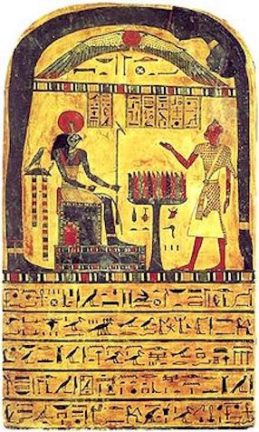
Thelemic Stele of Revealing
Crowley’s divine pantheon of Thelema came through a channeled entity called Aiwass; an ambassador of the Egyptian deity Horus. Aiwass came to Crowley and his wife Rose when he attempted to perform a ritual in the King’s Chamber of the Great Pyramid, before Rose fell into a trance and began repeating “they are waiting for you.”
Crowley was instructed to take dictation at a later hour where he channeled The Book of the Law, a.k.a. the Liber AL vel Legis.
Nuit was the high goddess of Thelema and narrator of its edicts, depicted in the form of a star-spangled naked woman. Nuit represents potentiality in its essence in this physical plane and beyond.
The male counterpart to Nuit is Hadit, who symbolizes the central core of everything. Hadit is described as the unique point in everything; “the flame that burns in the heart of every man and in the core of every star.” Hadit is depicted as a winged disk of the sun.
Beyond these two primary deities were Ra-Hoor-Khuit, Hoor-Paar-Kraat, and several others, along with a number of now recognized symbols and numbers representing Thelemic magick. Many of these became misconstrued with Satanism, often due to Crowley’s ironic embrace of such negative attention.
Crowley as a British Spy?
While some historians view Crowley’s antics as a contrived attempt to stick out and leave a legacy for Thelema, some believe he may have used it to cover his tracks working as a spook for English intelligence agencies.
This idea was explored in Richard B. Spence’s investigative biography Secret Agent 666: Aleister Crowley, British Intelligence and the Occult. In the book, Spence examines documents from English, French, American and Italian archives, finding that Crowley likely played a role in many intel operations, including the sinking of the Lusitania and plots to overthrow foreign governments.
These accounts have been debated, though it’s widely acknowledged that Crowley’s influence during WWII reached the highest ranks of English government in the form of the “V for victory” gesture. Picked up by the BBC and Churchill himself, the gesture has maintained its dominance in politics since, and was considered by Crowley to be a magick counter to the Nazi swastika.
And even in years prior there is evidence of Crowley’s involvement in international politics, most notably seen in 1914, when he moved to New York and began writing for The Fatherland, a German propagandist publication that tried to keep the U.S. neutral during WWI. Crowley wrote articles for the paper that were absurdly exaggerated and intended to make the Germans appear fanatical and silly.

It’s believed this faux charisma and Crowley’s undercover persona played a large role in hyping the false flag Lusitania attack, which subsequently encouraged the U.S. to become involved in the war as England’s ally.
A List of Famous Thelemites
Though Crowley passed away in 1947, his influence continues today and was highly influential to a number of famous musicians, philosophers, occultists and luminaries. Though some only dabbled in Thelema, renouncing it later or losing interest, others indefinitely incorporated his laws into their lives. Below is a short list of famous Thelemites one might recognize today:
- David Bowie
“I’m closer to the Golden Dawn
Immersed in Crowley’s uniform
I’m not a prophet or a stone age man
Just a mortal with potential of a superman”
– Quicksand
- The Beatles
“The whole Beatle idea was to do what you want, right? To take your own responsibility.” – John Lennon
- Robert Anton Wilson
It comes as no surprise that Robert Anton Wilson, the pope of Discordianism, would have ascribed to similar beliefs as Crowley. After all, the tenets of Discordianism hold that there is order, disorder, and the notion they are both illusory. In that case, “Do what thou wilt” seems to make a lot of sense.
- Timothy Leary
Leary’s “Turn on, Tune in, Drop out” certainly took some inspiration from the countercultural movements and boundary pushing pioneered by Crowley. Leary even believed himself to be a “continuation” of Crowley after pulling the Ace of Disks from Crowley’s “Thoth Tarot Deck.”
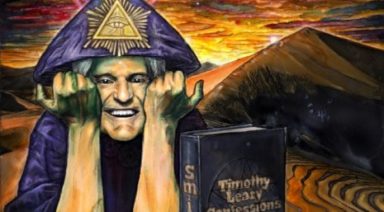
Image courtesy of dailygrail.com
- Jack Parsons
Founder of NASA’s Jet Propulsion Laboratory and modern day rocket science, Jack Parsons was also a devout follower of Aleister Crowley and the Law of Thelema. Parsons is said to have invoked Crowley’s Hymn to Pan – the god of fertility – before conducting rocket experiments.
- Led Zeppelin’s Jimmy Page
Page is said to have been fascinated with Crowley and the Ordo Templi Orientis, and in 1970 purchased Crowley’s former home, the Boleskine House, on Loch Ness in Scotland.
Though most continue to describe Crowley and his followers as members of a Satanic cult, these descriptions ignore the true nature of Thelema and Crowley’s intent with the esoteric. But if one digs a little deeper they’ll find a man ahead of his time, who attempted to push the boundaries of individual social freedom.
And in doing so, a man who embraced the puritanical and conservative shunning of his unique worldview, by accepting monikers like “the Beast” and “666” to attract attention for what may have been any number of reasons, except the one that seemed most obvious.
For more on the misunderstood life of Aleister Crowley, check out this episode of Beyond Belief with Lon Milo Duquette:
Gematria: Understanding the Numerical System that Decodes the Divine

Have you ever thought that numbers might tell stories just like words do? Gematria, a fascinating form of numerology found in Kabbalistic teachings, suggests that there’s a deep connection between numbers and words.
This ancient method, deeply rooted in sacred texts, proposes that every letter and word carries a numerical value that unveils deeper meanings. These connections might even offer clues to understanding both historical and future events through sacred texts like the Torah.
The concept of gematria numerology stems from the idea that mathematics is the universal language of nature and within it may be the keys to explaining our universe or evidence of supernatural power. Marty Leeds has taken this concept of the Kabbalistic gematria and applied it to the English language, believing that he has found a cipher in our alphabet to prove this theory.
What is Gematria?
Gematria is a numerological system where each letter of the Hebrew alphabet is assigned a specific numerical value. This system is used to interpret the hidden meanings within words, names, or phrases, based on the belief that God created the universe through the numerical values of Hebrew letters.
This practice, deeply rooted in the mystical aspects of the Hebrew Bible and embraced within Kabbalistic traditions, transcends simple word-to-number correspondences. It serves as a profound tool to explore the divine blueprint encoded within sacred texts, suggesting that every letter and word carries an intrinsic numerical value that reveals deeper, spiritual insights.
Modern scholars, including Marty Leeds, have extended the principles of gematria beyond Hebrew to the English language, proposing that these numerical ciphers uncover universal truths and mystical insights across different languages and cultures.
How Does Gematria Work?
The idea behind gematria numerology is that mathematics is a universal language, which might hold the keys to explaining our universe or even pointing to the existence of supernatural powers. In the practice of gematria, each Hebrew letter’s numerical value allows scholars and mystics to draw connections between words and uncover deeper meanings. These numerical values can also reflect broader concepts and beliefs. For instance:
- Number 888: In Christian numerology, the number 888 represents Jesus, or more specifically Christ the Redeemer. This comes from the fact that in Greek gematria, the letters of Jesus’ name add up to 888. This number is seen as a representation of infinite love and redemption.
- Number 666: Often recognized as the number of the beast from the Book of Revelation in the New Testament, 666 is associated with evil and Satan in popular culture. However, in the context of gematria, this number can have more complex interpretations depending on the scriptural and cultural context.
- Number 4: The number 4 is often seen as a symbol of stability and order in many cultures. In the context of gematria, it can represent the four elements (earth, water, air, fire), the four cardinal directions, or the foundational aspects of creation. This reflects its universal significance in forming the basis of the world’s structure.
- Number 33: This is a number with significant importance in Freemasonry where it signifies the highest degree of the Scottish Rite. In Kabbalistic tradition, it can represent the age at which Jesus was crucified and, by extension, a period of accomplishment or completion.
For example, the tzitzit, a shawl worn during Jewish ceremonies, provides a perfect illustration: the numerical value of its knots and strands adds up to 613, which intriguingly corresponds to the total number of commandments in the Torah. These numerical associations are believed to hold deeper spiritual or mystical significance, revealing connections that go beyond the surface and delve into the divine or universal truths.
What is Gematria Used For?
Gematria is not just about playing with numbers; it’s a tool embedded in the Kabbalistic tradition to interpret deeper meanings within sacred texts. Scholars use it to uncover insights about life, the divine, and cosmic mysteries. Beyond Judaism, gematria also appears in other cultures and languages, demonstrating its widespread influence and importance in various religious and philosophical traditions.
Exploring the Origins of Gematria
The practice of gematria is believed to have originated in the Jewish mystical tradition known as Kabbalah, but its influences can be traced back even further to ancient Greek and Arabic cultures. The practice was likely influenced by Greek isopsephy and Arabic abjad numerals, which also connect letters with numerical values. These practices highlight a universal quest to find deeper meaning in language and numbers across different cultures and historical periods.
Gematria in Different Cultures
While Hebrew gematria is most prominent, similar numerological practices exist in other cultures such as Greek and Arabic. These systems adapt to the peculiarities of their own languages and scriptures, providing a broad field of study for numerologists worldwide. The Greek system, for example, has been referenced by philosophers like Plato, showing gematria’s influence on early philosophical thought.
Examples of Gematria in Practice
- Biblical Texts and Jewish Tradition: Gematria is often used to interpret the Hebrew Bible. For instance, the Hebrew word for ‘life’ (חי) sums to 18, making it a significant number in Jewish culture.
- Modern Applications by Marty Leeds: Leeds argues that even the English alphabet can be broken down into numbers that reveal hidden codes, blending traditional and contemporary interpretations of gematria.
Kabbalistic Connections
In Kabbalah, gematria is not merely a numerological curiosity; it is an essential tool for exploring the esoteric and mystical dimensions of Hebrew scriptures. This practice is particularly valuable for interpreting the hidden meanings behind the names of God, such as the Tetragrammaton (YHWH) and other sacred words.
Kabbalists believe that each letter in these divine names carries specific numerical values that are direct expressions of cosmic energy and divine attributes. By decoding these numbers, mystics can gain insights into the fundamental structures of existence and the inner workings of the cosmos.
The use of gematria in Kabbalistic studies is seen as a method of interpretation and a form of meditation and spiritual practice, aimed at bringing practitioners closer to divine wisdom.
Key Aspects of Kabbalistic Gematria:
- Interpretation of divine names and cosmic energy
- Insights into the fundamental structures of existence
- Meditation and spiritual practice to connect with divine wisdom
Practical Uses of Gematria Today
While its roots are ancient, gematria has evolved to meet the needs of modern society. Today, it finds applications in various personal and practical contexts:
- Event Planning: Individuals use gematria to select auspicious dates for significant events, such as weddings or business openings. Aligning activities with favorable numerical values is believed to influence outcomes positively.
- Personal Insight: Gematria is used to analyze personal names, birth dates, and keywords, helping individuals uncover deeper spiritual meanings and potential life paths.
- Creative Applications: Artists and writers often use gematria to structure their works around specific numerical themes, adding a layer of symbolic significance to their creative outputs.
- Digital Accessibility: In the digital age, the principles of gematria have been adapted for online use, making this ancient wisdom accessible globally and allowing its exploration across different languages and cultures.
The Ongoing Relevance of Gematria
Gematria’s roots stretch deep into Kabbalistic mysticism and have branched out into modern linguistic studies. It remains a vital tool in the study of sacred texts and offers a unique perspective on the numerical patterns that many believe govern the universe. Whether used for spiritual discovery, theological study, or philosophical exploration, gematria captivates those who seek to understand the intersection of numbers and words in various cultures.
Gematria FAQs
How do you calculate words using gematria?
Calculating a word’s gematria value involves adding up the numerical values of each letter in the word. Different traditions may have their own set of values and methods, adding a layer of complexity to the calculations.
What is a Gematria Calculator?
A Gematria calculator is a digital tool that simplifies these calculations, allowing users to quickly find the numerical value of words and phrases across different Gematria systems.
How does gematria work in the Hebrew language?
In Hebrew, each letter is assigned a numerical value, and these numbers are used to explore relationships and uncover deeper symbolic meanings between words, based on their numerical equivalence.



